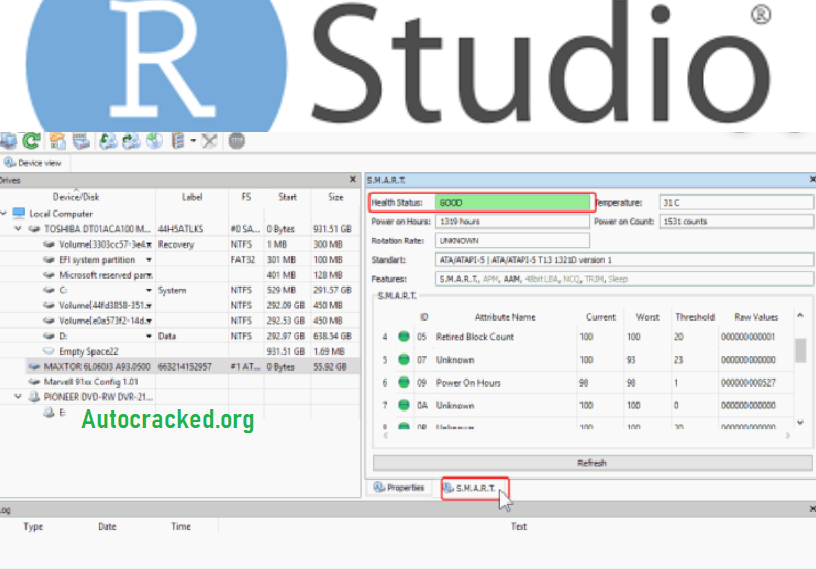Basic Data Analysis through R/R Studio. In this tutorial, I 'll design a basic data analysis program in R using R Studio by utilizing the features of R Studio to create some visual representation of that data. Following steps will be performed to achieve our goal. Downloading/importing data in R. Transforming Data / Running queries on data. R script (1) The usual Rstudio screen has four windows: 1. Workspace and history. Files, plots, packages and help. The R script(s) and data view. The R script is where you keep a record of your work. For Stata users this would be like the do-file, for SPSS users is like the syntax and for SAS users the SAS program.
No matter how much you know about the R ecosystem already, you’ll always have more to learn. At RStudio, we know that everyone is at a different stage in learning the vast ecosystem of R, ranging from rank beginner to seasoned data scientists to professional educators. Choose a starting point below, or catch up with us on our blog. A community for all things R and RStudio. Topic Replies Views Activity; Welcome to the RStudio Community! 0: 16352: September 25, 2016.
No one starting point will serve all beginners, but here are 6 ways to begin learning R.
Install , RStudio, and R packages like the tidyverse. These three installation steps are often confusing to first-time users. For beginner-friendly installation instructions, we recommend the free online ModernDive chapter Getting Started with R and RStudio. You may also enjoy the Basic Basics lesson unit from R-Ladies Sydney, which provides an opinionated tour of RStudio for new users and a step-by-step guide to installing and using R packages.
Spend an hour with A Gentle Introduction to Tidy Statistics In R. If you are coming to R from a traditional point-and-click statistics package such as SPSS or SAS, RStudio’s Thomas Mock has created a free video webinar titled A Gentle Introduction to Tidy Statistics In R. This one-hour introduction covers how to get started quickly with the basics of research statistics in R, providing an emphasis on reading data into R, exploratory data analysis with the tidyverse, statistical testing with ANOVAs, and finally producing a publication-ready plot in ggplot2. Plus, you’ll find a host of other RStudio webinars and videos to explore via the topic menus on the left side of that page.
Read R for Data Science. While videos are great for some, others of us learn best by curling up with a good book. If that describes you, pick up a copy of R For Data Science by Wickham and Grolemund (2016) from your friendly local bookseller. R For Data Science is available in paper and electronic forms and has been translated into multiple languages including Spanish, so choose the version that’s easiest for you. R For Data Science is also available for free as a online book at https://r4ds.had.co.nz. If you don’t yet know enough about R to commit to R for Data Science, you may find Garrett Grolemund’s Hands On Programming with R(2014) a quicker way to get started. It’s also available in paper, electronic, and free online versions.
Start coding using RStudio.cloud Primers. One of the most effective ways to get started learning R is to start using it. RStudio.cloud Primers offer a cloud-based learning environment that will teach you the basics of R all from the comfort of your browser. RStudio.cloud doesn’t require you to install any software on your computer, making it easy to dip your toe into data science with R with a minimum of fuss. And best of all, rstudio.cloud accounts are free for personal use.
Publish your work with R Markdown. R is a terrific tool for telling stories with graphics and data, but sometimes you need words too. R Markdown weaves together narrative text and code to produce elegantly formatted reports, papers, books, slides and more. Garrett Grolemund will give you a personal R Markdown tour with his Get Started With R Markdown video, or you can choose your own path through the wonders of R Markdown at rmarkdown.rstudio.com. Bookmark R Markdown: The Definitive Guide(2018) as you work too; it provides a great overview of what is possible within the R Markdown family of packages.
Learn about some power tools for development. RStudio offers 6 videos called the RStudio Essentials Series that help you learn how to program and manage R projects using RStudio’s tools including the RStudio Integrated Development Environment (IDE). These videos will also help you learn good development practices that make collaboration within a team safe and easy.

R Studios
Allaire, JJ, Yihui Xie, Jonathan McPherson, Javier Luraschi, Kevin Ushey, Aron Atkins, Hadley Wickham, Joe Cheng, Winston Chang, and Richard Iannone. 2020. Rmarkdown: Dynamic Documents for R. https://CRAN.R-project.org/package=rmarkdown.
Grolemund, Garrett. 2014. Hands-on Programming with R: Write Your Own Functions and Simulations. O’Reilly Media, Inc. https://rstudio-education.github.io/hopr/.
Wickham, Hadley. 2019. Tidyverse: Easily Install and Load the ’Tidyverse’. https://CRAN.R-project.org/package=tidyverse.
Wickham, Hadley, Winston Chang, Lionel Henry, Thomas Lin Pedersen, Kohske Takahashi, Claus Wilke, Kara Woo, Hiroaki Yutani, and Dewey Dunnington. 2020. Ggplot2: Create Elegant Data Visualisations Using the Grammar of Graphics.
Wickham, Hadley, and Garrett Grolemund. 2016. R for Data Science: Import, Tidy, Transform, Visualize, and Model Data. O’Reilly Media, Inc. https://r4ds.had.co.nz/.

R Studio Sqrt
Xie, Yihui, Joseph J Allaire, and Garrett Grolemund. 2018. R Markdown: The Definitive Guide. Chapman; Hall/CRC. https://bookdown.org/yihui/rmarkdown/.
Comments are closed.